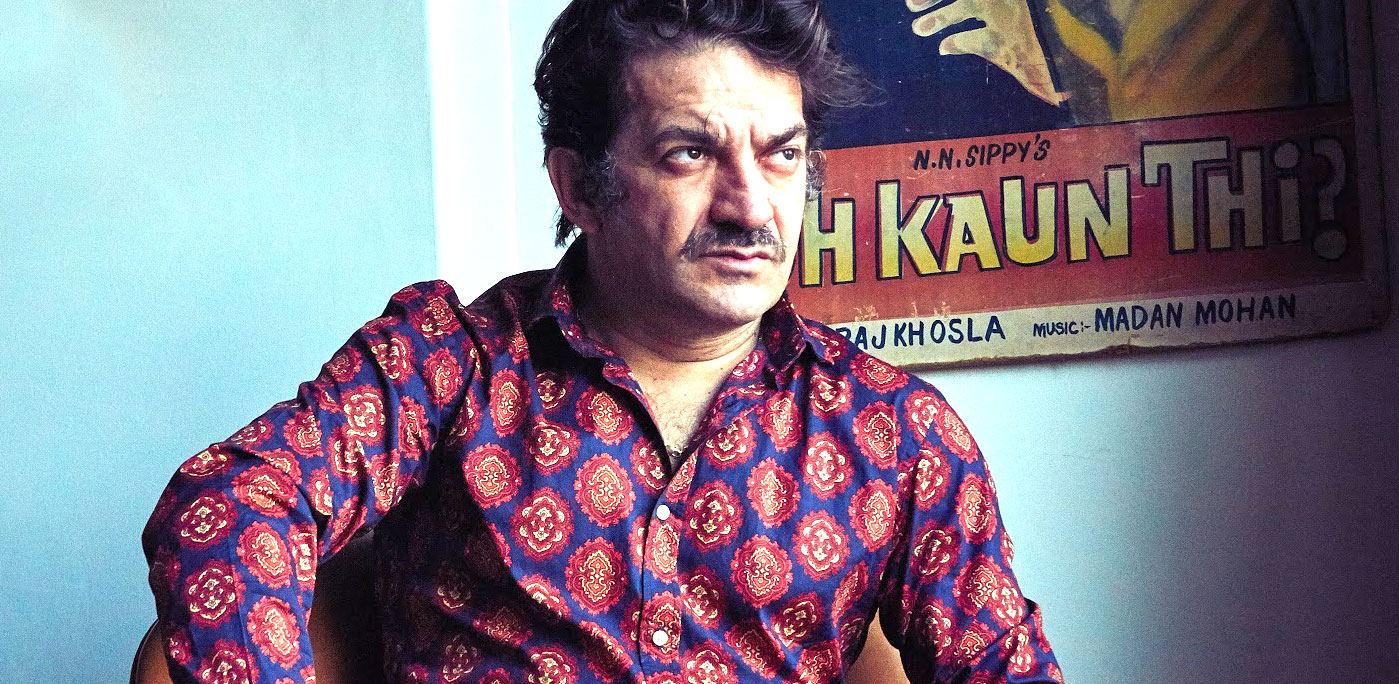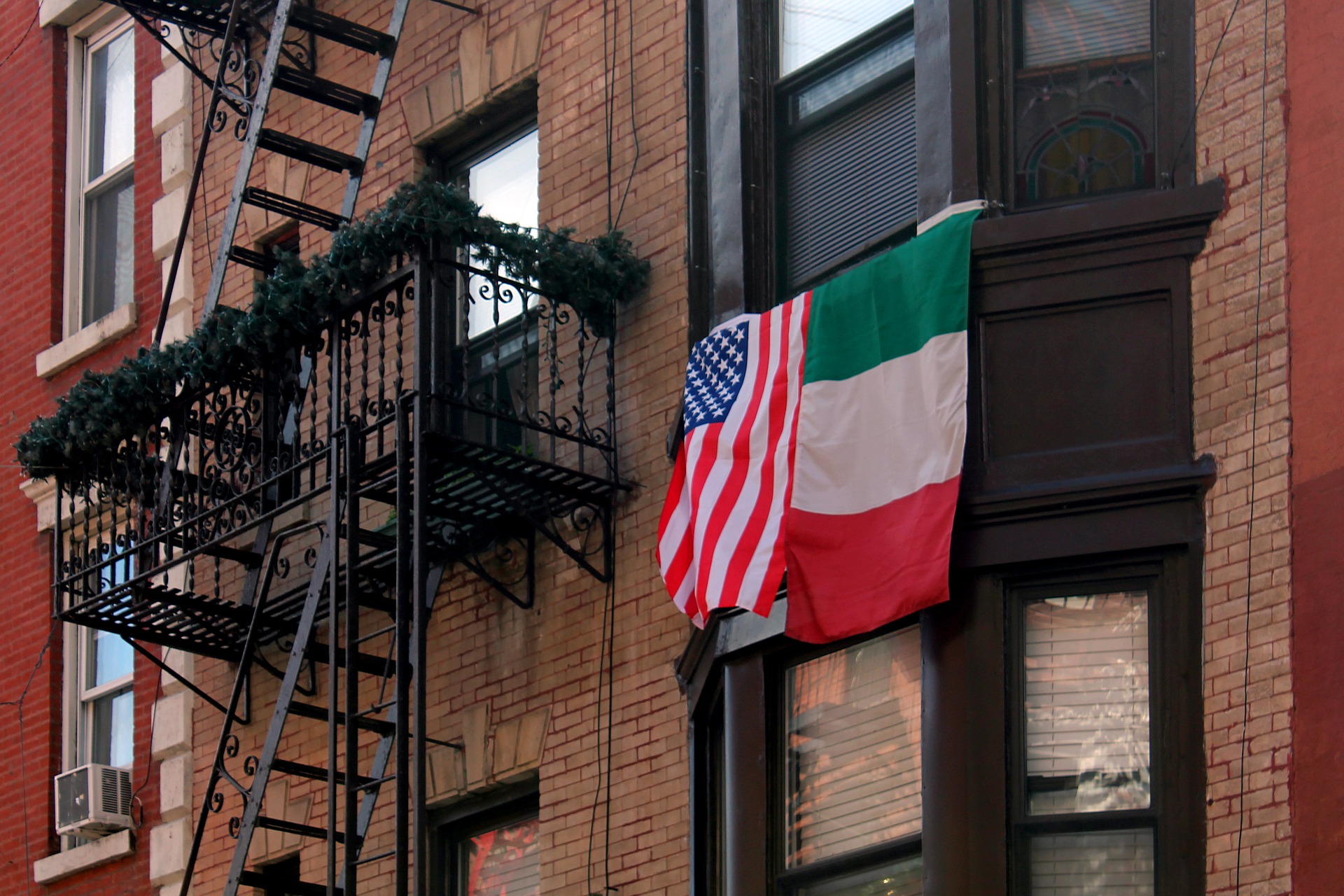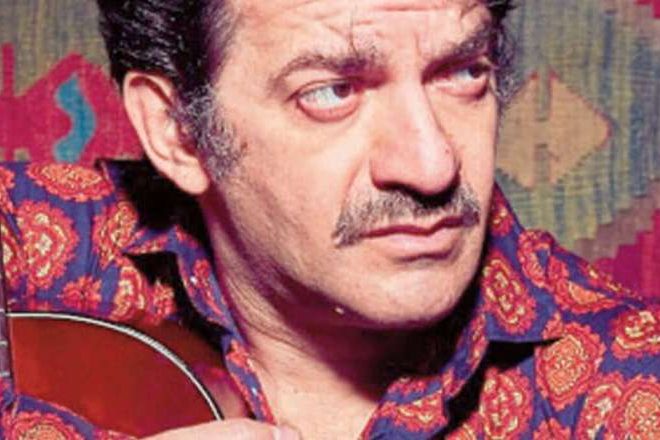Peppe Voltarelli, a Calabrian folk singer-songwriter, with a musical career spanning over twenty-five years and two prestigious “Tenco Awards” under his belt, has been touring campuses across the States to present his latest book + CD, Peppe Voltarelli sings Profazio.
He has been sharing this multimedia journey with his artistic partner, Anna Corcione, a Neapolitan painter who matched lyrics and music with visual pastiches, in conjunction with her sister Rosaria.
In L.A., they have changed their tune and performed in a private house, an intimate setting for a few aficionados.
Voltarelli’s cover songs are an homage to his fellow countryman Otello Profazio, key figure in Southern Italy’s folk-revival musical tradition. Like a set of Russian nesting dolls, the latter singer-songwriter, in turn, has set to music several Sicilian poems by late Ignazio Buttitta.
Common denominator in the works of the three artists is a vivid portrayal of “Mezzogiorno,” timeless and historically contradictory area.
No matter if, like myself, you’re not from those southern Italian regions and you don’t understand most of the dialectal lyrics, you can still fully enjoy Voltarelli’s ironic rendition of Calabria’s, and Sicily’s, folk soul.
Parallel to the musical series of cross-references, Anna and Rosaria Corcione have originally reinterpreted the figurative mode by late Calabrian painter, Mimmo Rotella, paradoxically associating an artist close to the pop art to the folk-singing tradition.
Let’s dig deeper into this artistic process with Anna herself.
Tell us more about the artistic process of matching your artworks to the songs interpreted by Voltarelli.
My sister Rosaria and I, native of Naples, Campania, have been creating art together for fifteen years.
When Voltarelli asked us to collaborate on his book + CD, we were enthusiastic about working on a project of fusion between several art forms.
Instinctively, we decided to pay tribute to Mimmo Rotella, Calabrian artist who played a key role in post-war European art. A similar process to the one carried out by Peppe, who paid homage to Otello Profazio, a giant in the folk musical genre of Southern Italy.
Rotella tore strips off posters, found along the street, and then reassembled them on canvas, employing a technique called “décollage.”
We modernized the process, sourcing the fragments of images from social media. The end result consists in fourteen paintings of various sizes. The media applied to the canvasses range from organic resins, Indian inks to pigments and stuccos.
We were honored to have our first exhibition, at the Ariston Theatre, in Sanremo, Liguria (home of the annual Sanremo Music Festival), in occasion of the conferment of “Targa Tenco” to Voltarelli and “Tenco Life Achievements Award” to Profazio.
During this US tour, I’ve been projecting slides of our artworks, spaced out by some quotes from Profazio, in Voltarelli’s rendition.
And now let’s hear from Peppe Voltarelli himself:
Please, introduce yourself. When did you develop your passion for music?
I approached music during middle school. Then, in the 1990s, during my university years in Bologna (capital of Emilia-Romagna region in Northern Italy), I started to play professionally, and co-founded the band, Il Parto delle Nuvole Pesanti.
We were all hailing from Calabria and sang in our dialect, eventually creating a new musical genre, called “Tarantella Punk.”
Tell us more about your solo career path?
After fifteen years and seven albums released with my band, in 2007, I debuted as soloist with an album, titled “Distratto ma però,” with influences ranging from Rino Gaetano, Domenico Modugno, the Italian tradition of “teatro canzone” – a unique mix of monologues and songs created by Gaber and Luporini – to the folk-telling tradition from Southern Italy, particularly Calabria.
In 2010, my experimental album, “Ultima notte a Malà Strana,” was the first dialectal compilation from Calabria to receive the Italian most prestigious award in the indie musical landscape, the “Targa Tenco for best work in dialect.”
In 2014, I realized the album, “Lamentarsi come ipotesi,” a melancholic return to my Calabrian roots, as well as an homage to great Italian singers, from Modugno to Conte.
Your latest work, “Voltarelli canta Profazio,” was awarded with the 2016 “Targa Tenco as best interpreter of non-original songs.” Let’s talk more about your reinterpretation of Calabrian folk singer-songwriter Otello Profazio, and the scope of your latest artistic endeavor.
Starting from Profazio’s lyrics and music, I branched out to create a multimedia book plus CD, a blend of literature, music and figurative art. The last consisting of visuals/artworks by Neapolitan sisters, Anna and Rosaria Corcione.
This creative “intersection” of various arts helped me achieving the prestigious recognition of “Targa Tenco as best interpreter of non-original songs.”
To me, coming from a background in original songwriting, it was no easy task to reinterpret the songs by another singer-songwriter. However, “Voltarelli canta Profazio” represents my second attempt of the kind, after recording the cover of some songs by singer-songwriter Claudio Lolli, in 2003.
My latest work aims to give voice to Southern Italy, especially Calabria and Sicily, and their rich folklore, as well as a cross section of Italy’s contemporary folk music, altogether.
Hailing from the same geographical area and sharing identical cultural roots, I’m happy to keep alive Otello Profazio’s precious legacy, as one of the strongest dialectal voices within this musical genre.
My intent, coherently with folk music’s dictates, is also political, in the sense of passing along the message that our Southern roots need to be preserved and respected, in the face of other aggressive trends. I make myself a spokesperson for our shared “meridional pride.”
Why did you choose to perform in an intimate setting in Los Angeles, rather than a bigger venue?
Rather than a concert, mine resembles more a multimedia and cultural happening, made up of several art expressions.
I view these occasions more like social gatherings, where I share the evening with a group of selected people in a climate of conviviality. I don’t focus on the spectacular aspect of my show.
I refrain as much as I can from impersonal events, in which I don’t get to know my audience and, instead, I like a lot more the opportunity offered by smaller venues to connect with the people who attend my concerts. In that way, I feel that my music can have an impact on their lives, if they choose so.
House concerts are becoming popular both in Europe and the US. They are attended by a very niche audience, passionate about that specific performer and his or her music.
Over my long career, I’ve been almost hand-picking my audience and attentively nurturing relationships with each and every one of them. I don’t want my music to be just a commercial product, but rather a poetic medium able to pass along some valuable message.
Parallel to this L.A.’s intimate experience, during my current tour across several US campuses, I have not been neglecting a more educational aspect of sharing my artistic view with young students, who are living perhaps their most crucial formative phases during the university years.
For the full version of the interview, please see our website.































